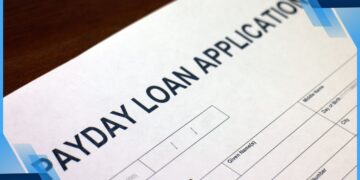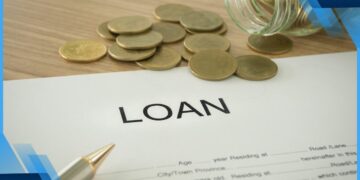Navigating Personal Loans: How to Make the Best Choice for Your Finances

In life, we often encounter situations where we need extra cash—whether it’s for a big purchase, an unexpected expense, or even consolidating debt. When your savings fall short, a personal loan can be a helpful solution.
But what exactly is a personal loan, how does it work, and how can it benefit you? This article will break down everything you need to know about personal loans in Australia, giving you the confidence to make an informed decision.
What Is a Personal Loan?
A personal loan is essentially a lump sum of money borrowed from a bank, credit union, or online lender that you agree to pay back over time with interest. These loans are pretty flexible and can be used for almost anything—from renovating your home to paying for a wedding or even taking a holiday.
The beauty of a personal loan lies in its simplicity. Once approved, you get the money upfront, and you repay it over a set period, usually between one and seven years.
How Does It Work?
When you apply for a personal loan, the lender will assess your creditworthiness based on factors like your credit score, income, and employment status. If approved, you’ll receive a fixed amount of money, which you’ll need to pay back in regular installments, along with interest.
The interest rate can either be fixed (stays the same throughout the loan term) or variable (can change based on the market). It’s a straightforward process, and once the loan is paid off, you’re done—no revolving credit like with a credit card.
How to Apply for a Personal Loan Online
Applying for a personal loan has become incredibly convenient thanks to online applications. Most lenders in Australia now offer the option to apply for a loan online, saving you a trip to the bank.
The Application Process
- Research: Start by comparing different lenders to find the best interest rates and loan terms. Websites like MoneySmart and Money.com.au are great resources for this.
- Eligibility Check: Make sure you meet the lender’s eligibility criteria. This typically includes being over 18, having a stable income, and meeting a minimum credit score requirement.
- Prepare Your Documents: You’ll need to provide proof of identity, income, and sometimes your expenses. Having these ready can speed up the process.
- Fill Out the Application: Most online applications will ask for details about your income, employment, and the loan amount you’re seeking. Make sure to double-check your information before submitting.
- Submit and Wait: After submitting your application, the lender will review it and may ask for additional information. If approved, the money is usually deposited into your account within a few days.
Secured vs. Unsecured Personal Loans
Personal loans come in two main types: secured and unsecured.
Secured Personal Loans
A secured personal loan requires you to put up an asset—like your car or home—as collateral. Because the lender has something to fall back on if you default, these loans usually come with lower interest rates.
However, the risk is that if you can’t make your repayments, the lender could take your asset.
Unsecured Personal Loans
On the other hand, an unsecured personal loan doesn’t require any collateral. This makes it less risky for you, but more risky for the lender, which typically results in higher interest rates. Unsecured loans are more common for smaller amounts or when you don’t want to risk losing your assets.
Personal Loans vs. Credit Cards
You might be wondering, “Why not just use a credit card?” While credit cards are great for short-term borrowing and everyday expenses, they aren’t always the best option for larger amounts or longer-term needs.
Key Differences
Interest Rates: Personal loans generally have lower interest rates compared to credit cards, especially if you have a good credit score.
Repayment Structure: With a personal loan, you have a set repayment schedule, which can help with budgeting. Credit cards, on the other hand, have revolving credit, which can lead to ongoing debt if not managed carefully.
Loan Amount: Personal loans usually offer larger amounts compared to the credit limit on a credit card. This makes them more suitable for bigger expenses like home renovations or medical bills.
Why Consider a Personal Loan?
A personal loan can be a better choice compared to other forms of credit for several reasons. First, it offers flexibility, allowing you to use the funds for almost anything, whether it’s consolidating debt, making a big purchase, or covering unexpected costs.
Additionally, personal loans come with predictable payments, so you know exactly how much you need to pay each month and when the loan will be fully repaid, making it easier to manage your finances. Moreover, if you have a good credit score, you might be able to secure a personal loan with a lower interest rate than other forms of credit, potentially saving you money in the long run.
How to Choose the Best Personal Loan?
Choosing the right personal loan involves more than just finding the lowest interest rate; there are several important factors to consider. First, always compare the interest rates offered by different lenders, as even a small difference can significantly impact the total cost of the loan.
Additionally, be aware of any hidden fees, such as application fees, late payment fees, or early repayment penalties, as these can offset the benefit of a lower interest rate. The loan term is another key consideration; while a longer term might result in lower monthly payments, it will also lead to higher overall interest costs.
Flexibility is also important, with some loans offering features like the ability to make extra repayments without penalty or access to a redraw facility, giving you more control over your loan. Finally, it’s crucial to choose a reputable lender, so be sure to check reviews and ratings and confirm that the lender is licensed to operate in Australia.
Major Australian Banks That Offer Personal Loans
Here’s a quick look at some of the major Australian banks that offer personal loans and what they bring to the table:
Commonwealth Bank
Personal Loan Features: Commonwealth Bank offers both secured and unsecured personal loans. With flexible repayment options and the ability to make additional payments without penalty, it’s a popular choice for borrowers.
ANZ
Personal Loan Features: ANZ provides personal loans with competitive fixed and variable interest rates. They also offer a loan calculator on their website, helping you figure out how much you can borrow.
Westpac
Personal Loan Features: Westpac’s personal loans come with flexible terms and the option to apply online. They also provide an easy redraw facility, which allows you to access extra repayments if needed.
NAB
Personal Loan Features: NAB offers unsecured personal loans with no early exit fees. They have a straightforward application process and provide quick approval for eligible borrowers.
St. George Bank
Personal Loan Features: St. George Bank offers both fixed and variable rate personal loans, with the flexibility to tailor repayments to your needs. Their secured loans offer lower interest rates if you’re willing to put up collateral.
A personal loan can be a valuable financial tool when you need extra cash, whether it’s for a significant purchase, an emergency, or debt consolidation. By understanding the ins and outs of how personal loans work, the differences between secured and unsecured loans, and how they compare to other forms of credit, you can make an informed decision that aligns with your financial goals.
Remember to shop around, compare offers from different lenders, and choose a loan that best fits your needs and budget. With the right loan, you can achieve your financial objectives without unnecessary stress or financial strain.
Related content

Car Loans in Australia: Compare the Best Options for Every Budget

Pros and cons of payday loans in Australia

How to refinance your mortgage and save money

Loan Interest Rates: Variable vs. Fixed

How to Choose the Best Personal Loan
